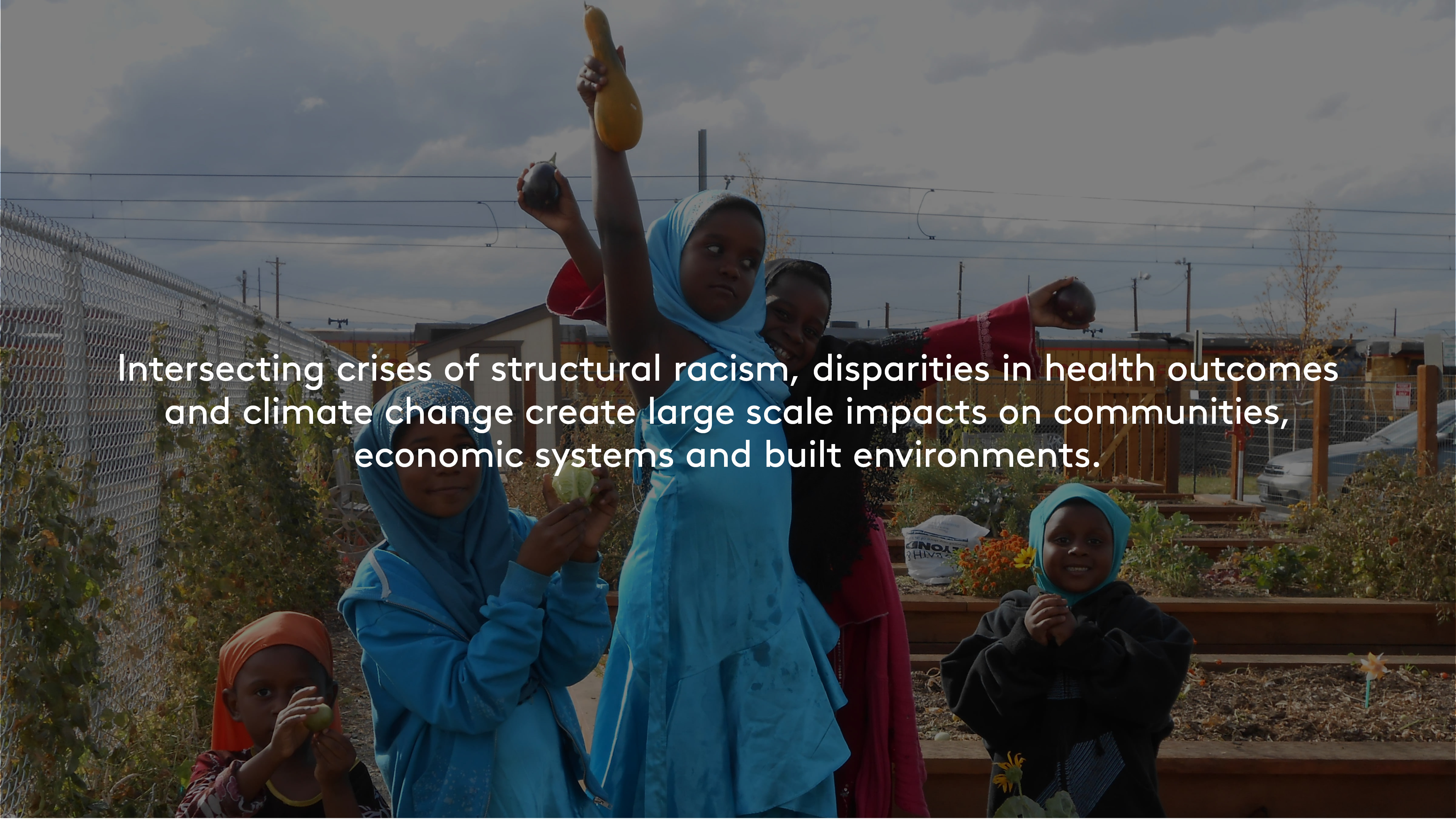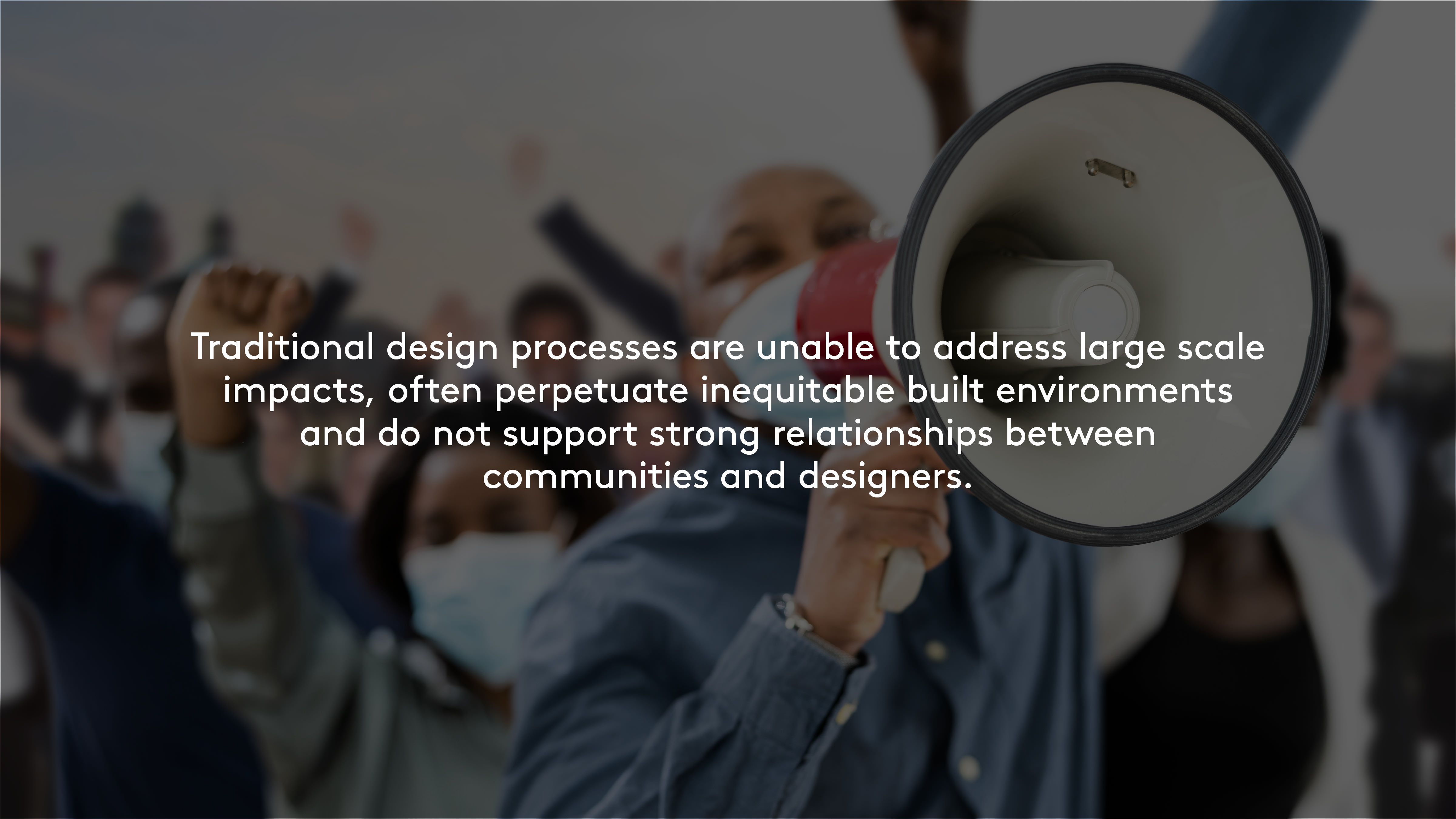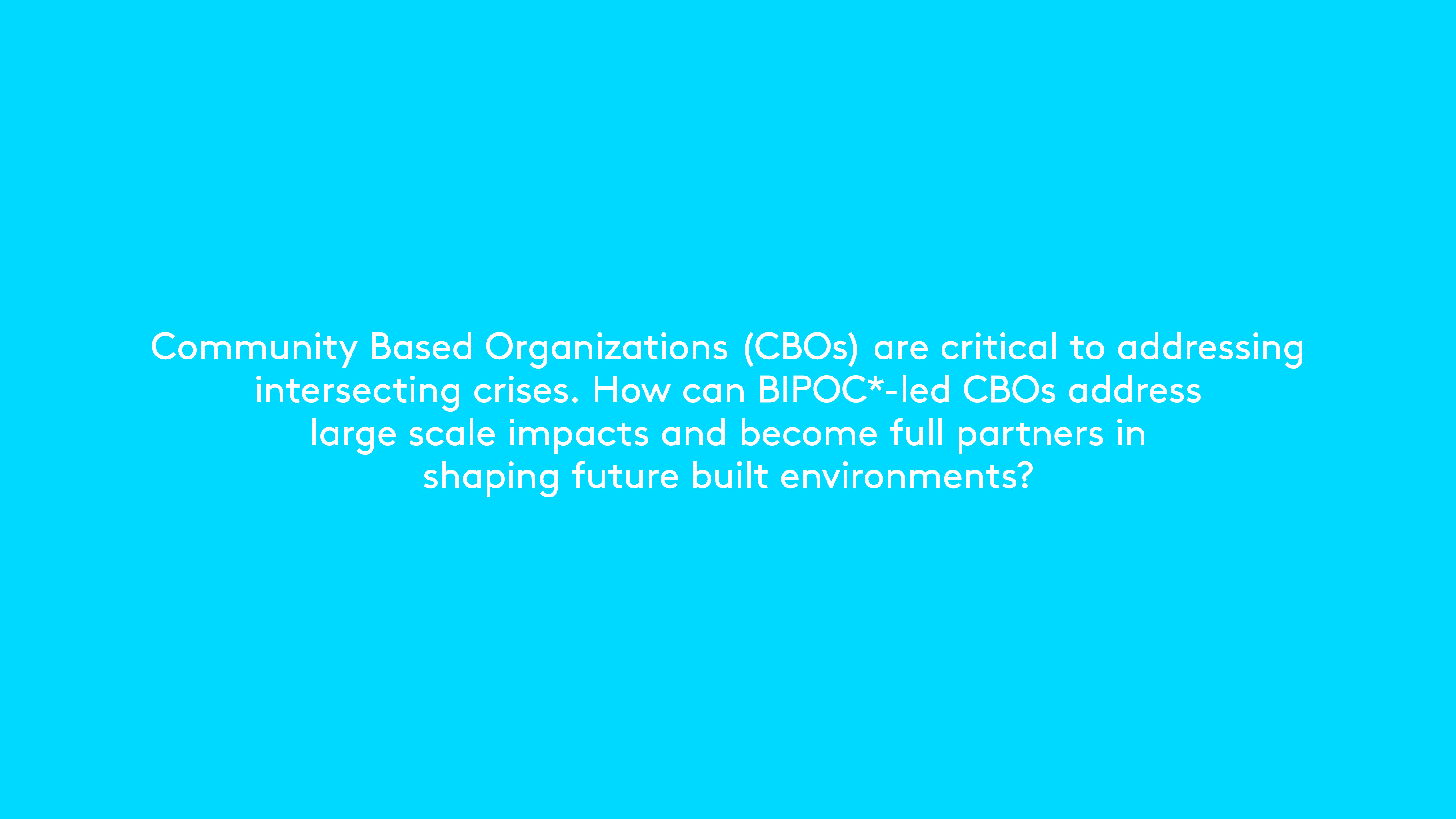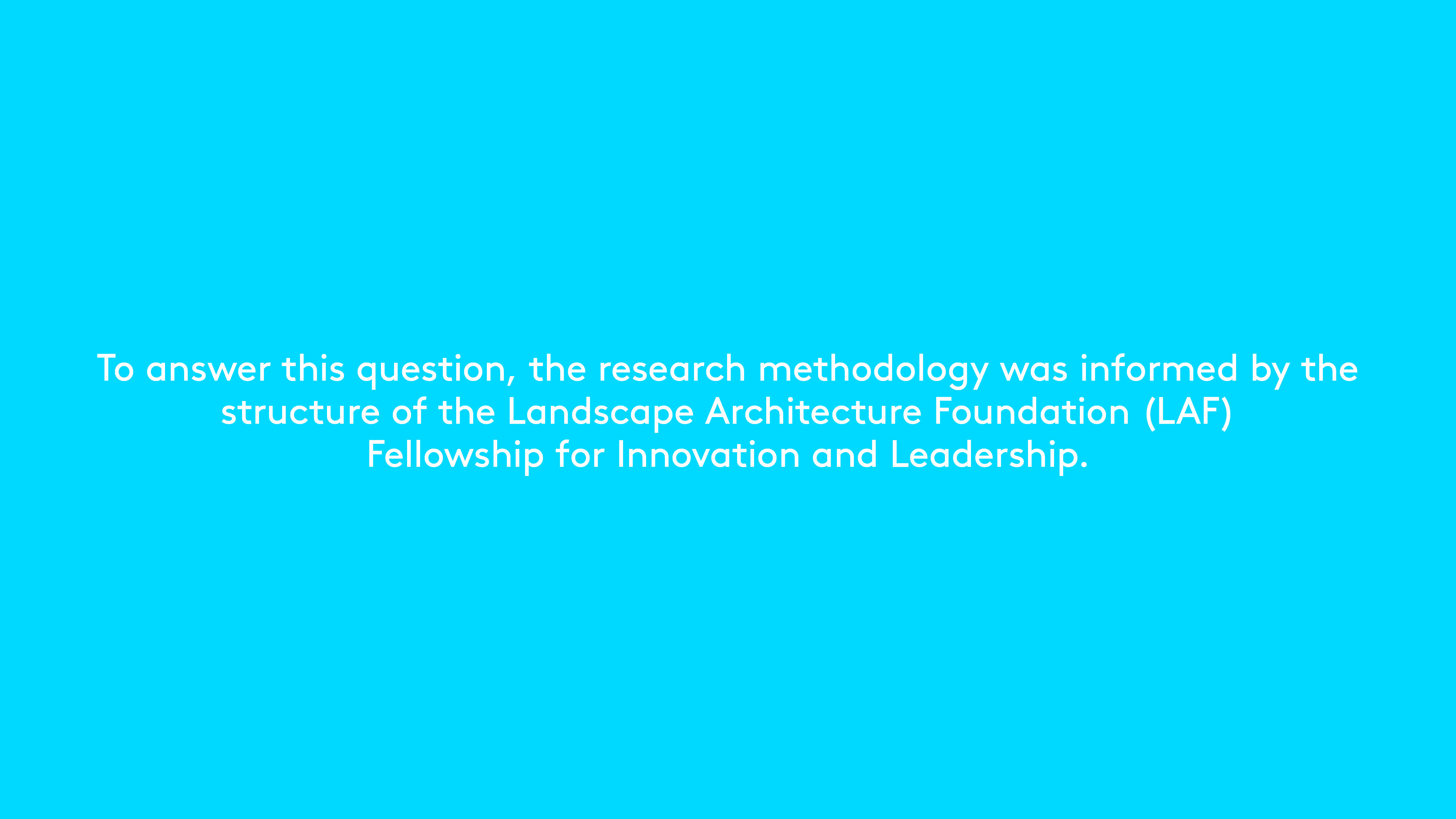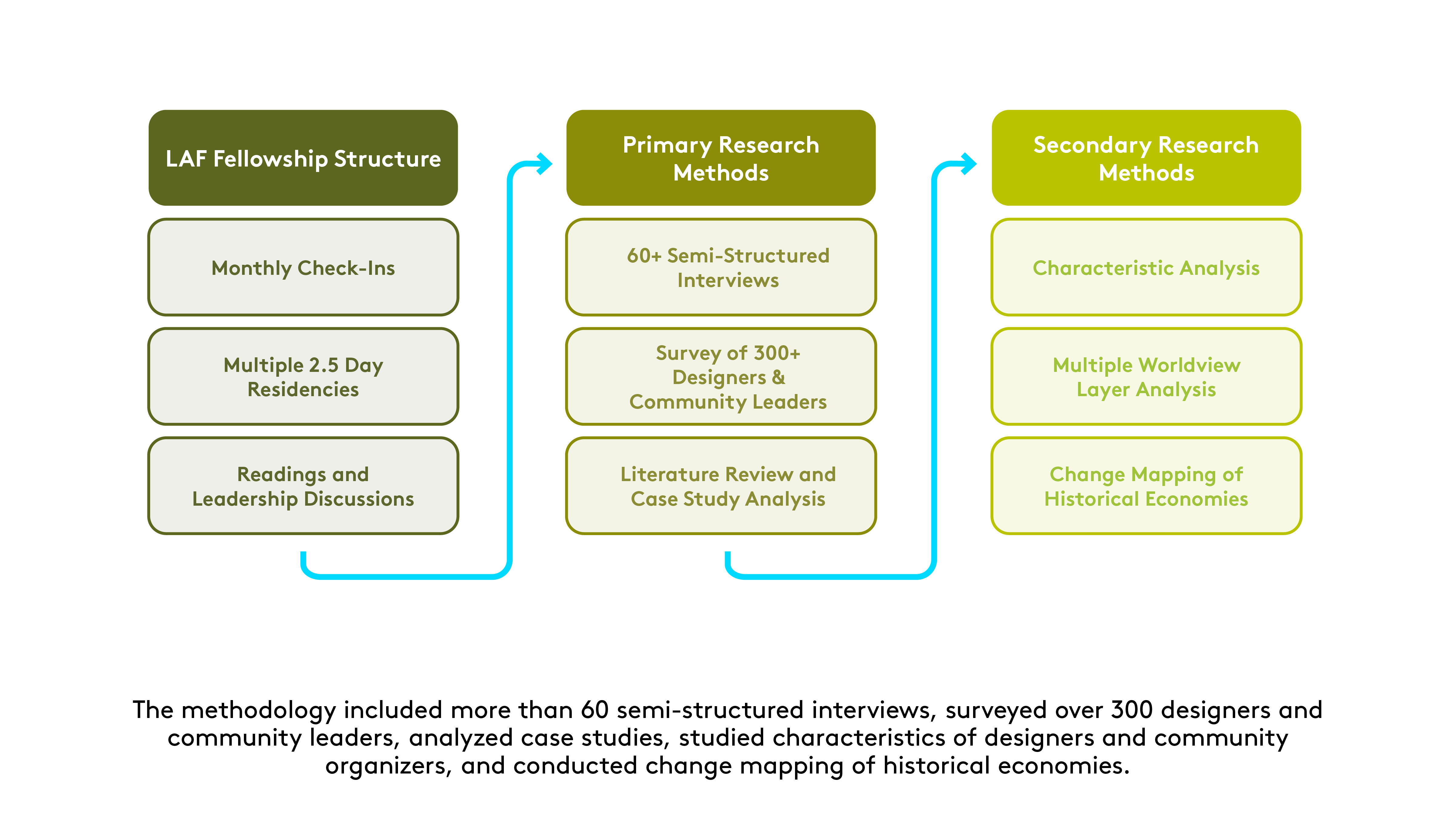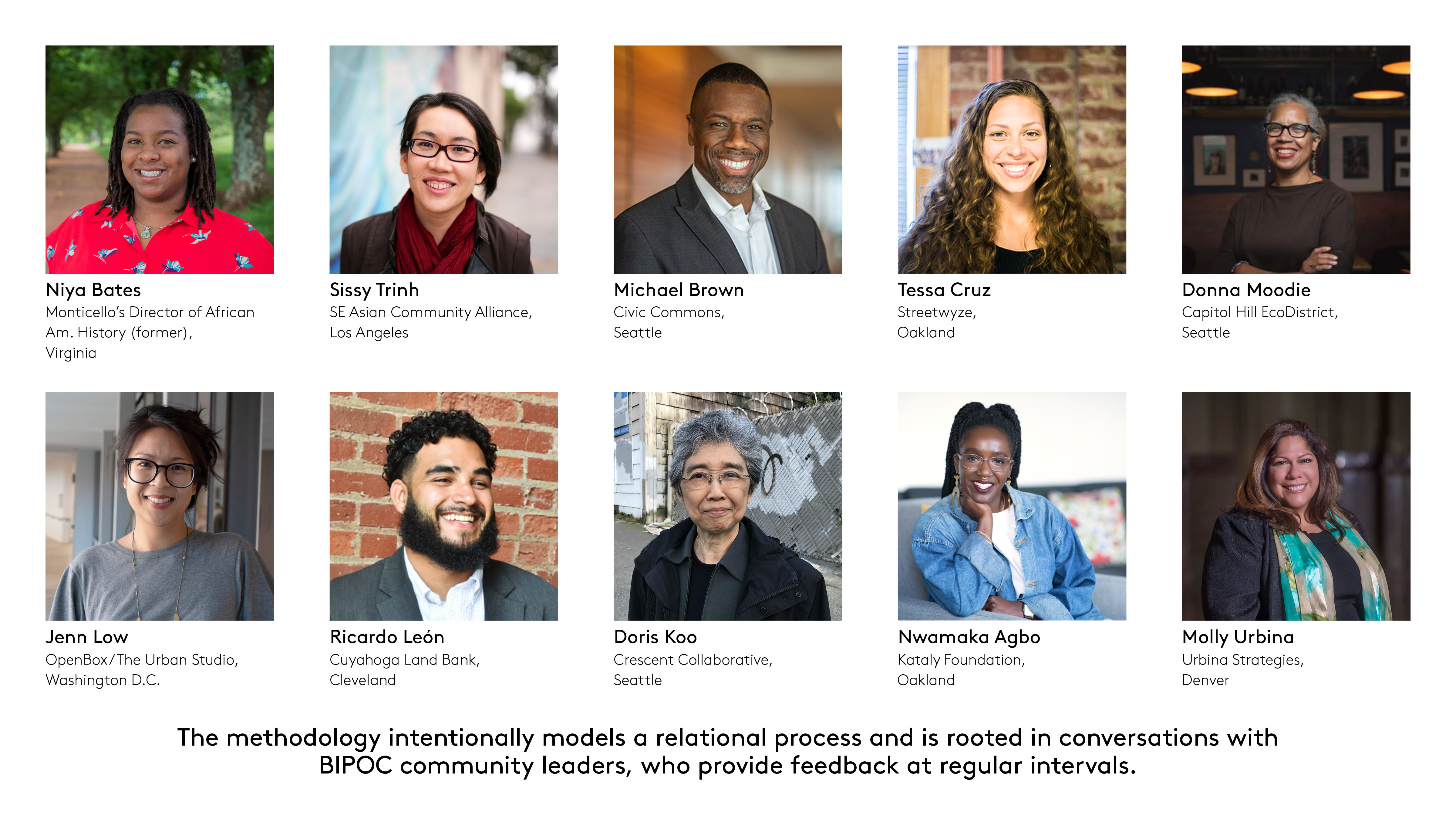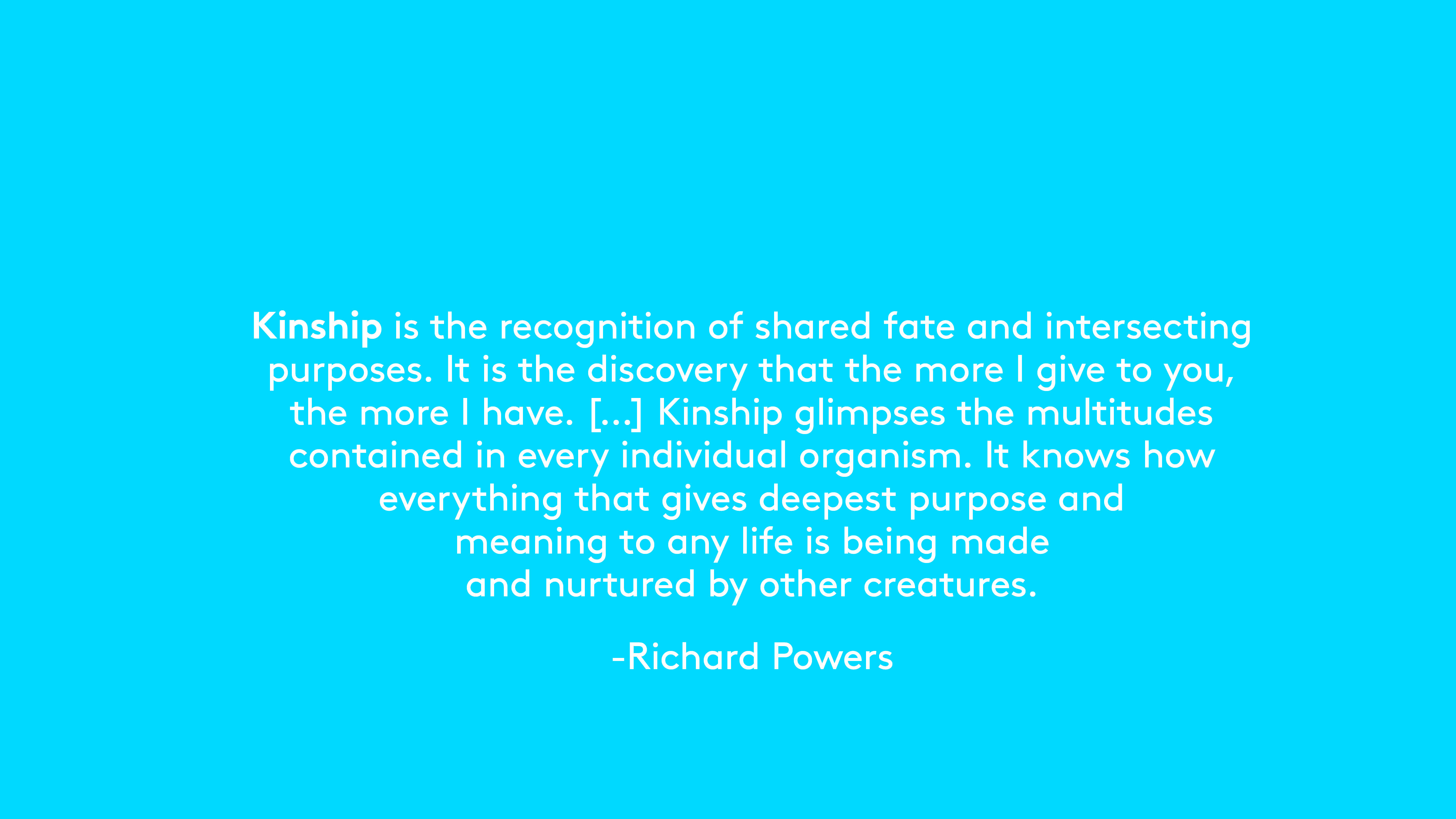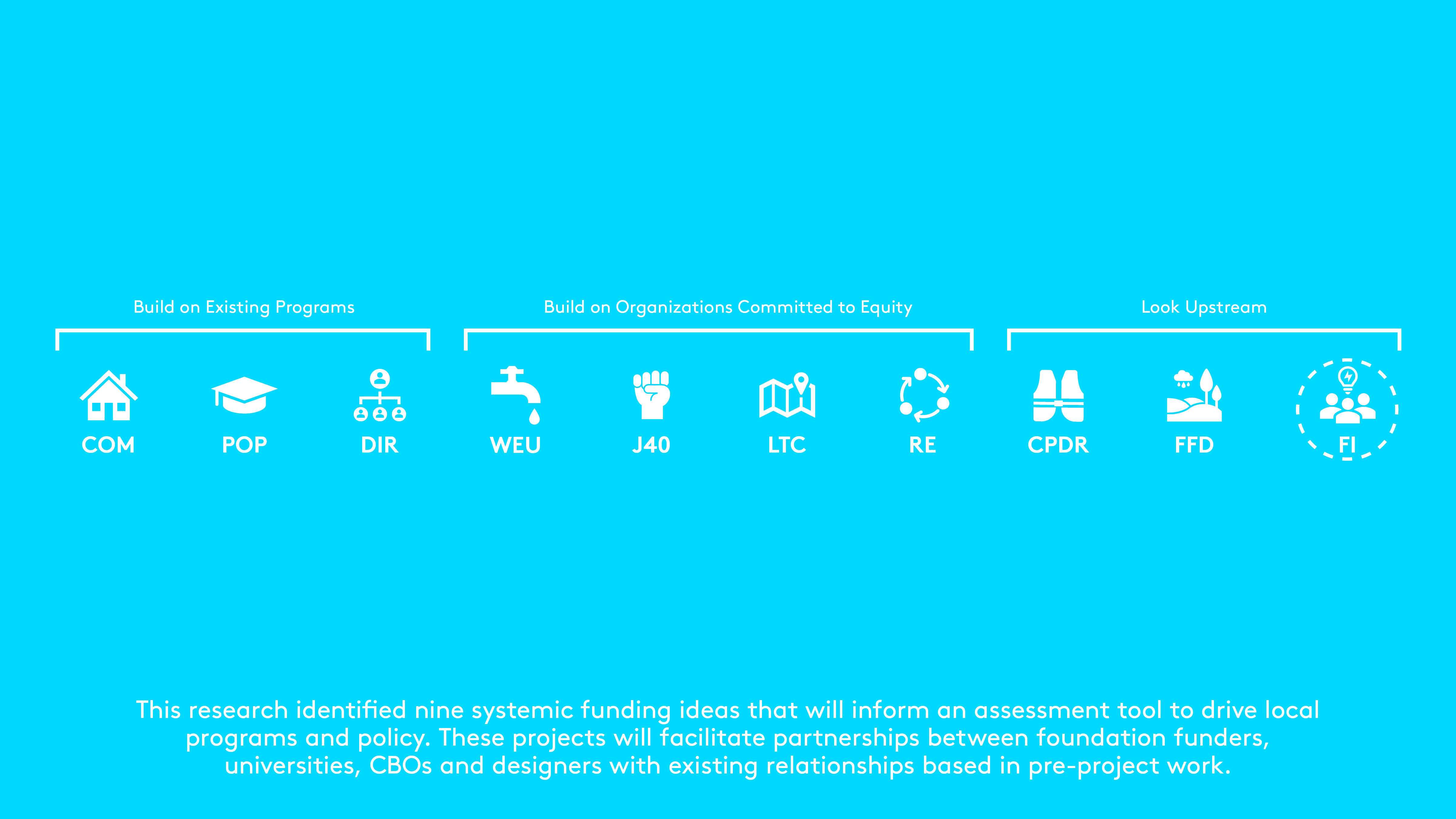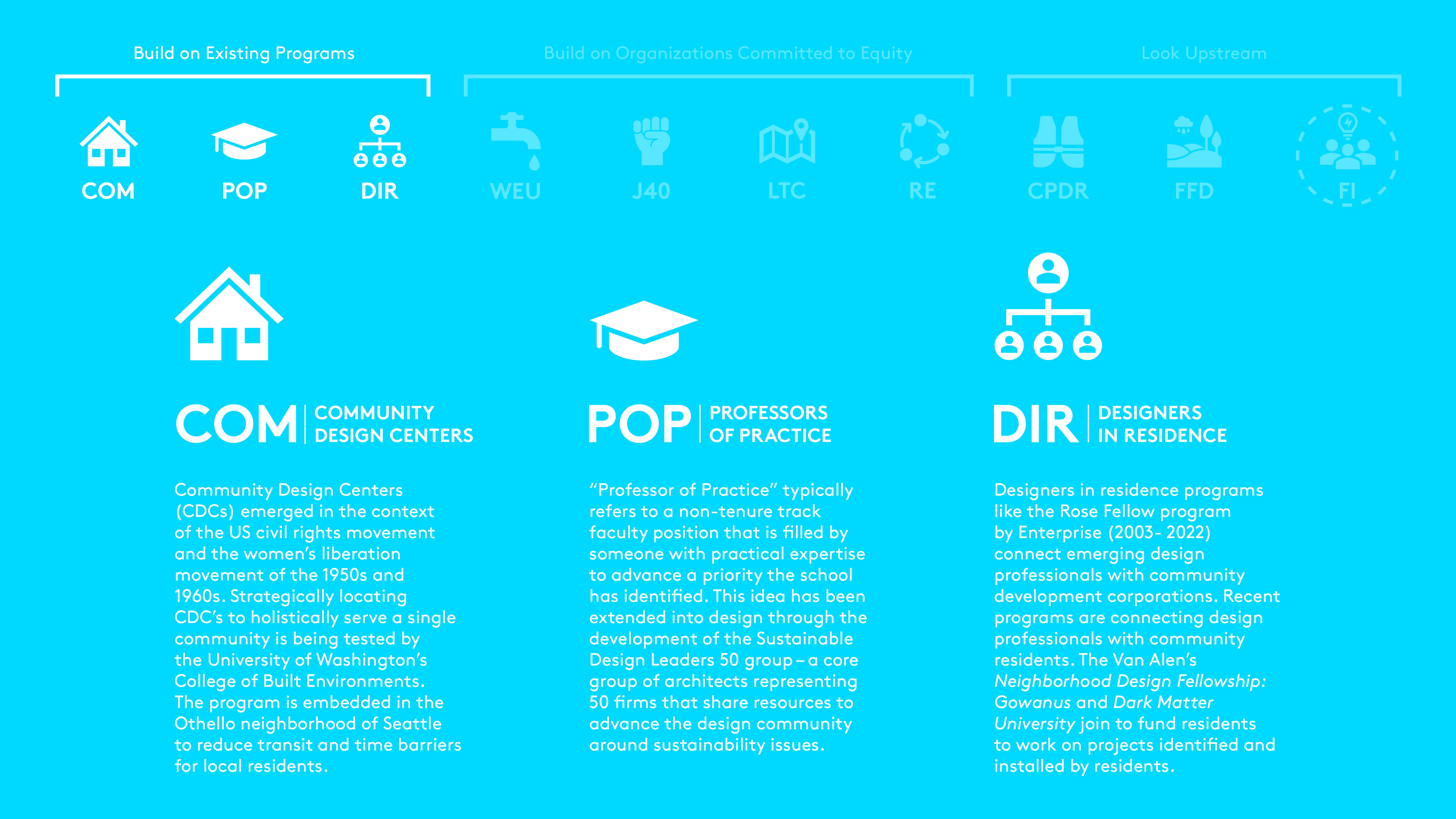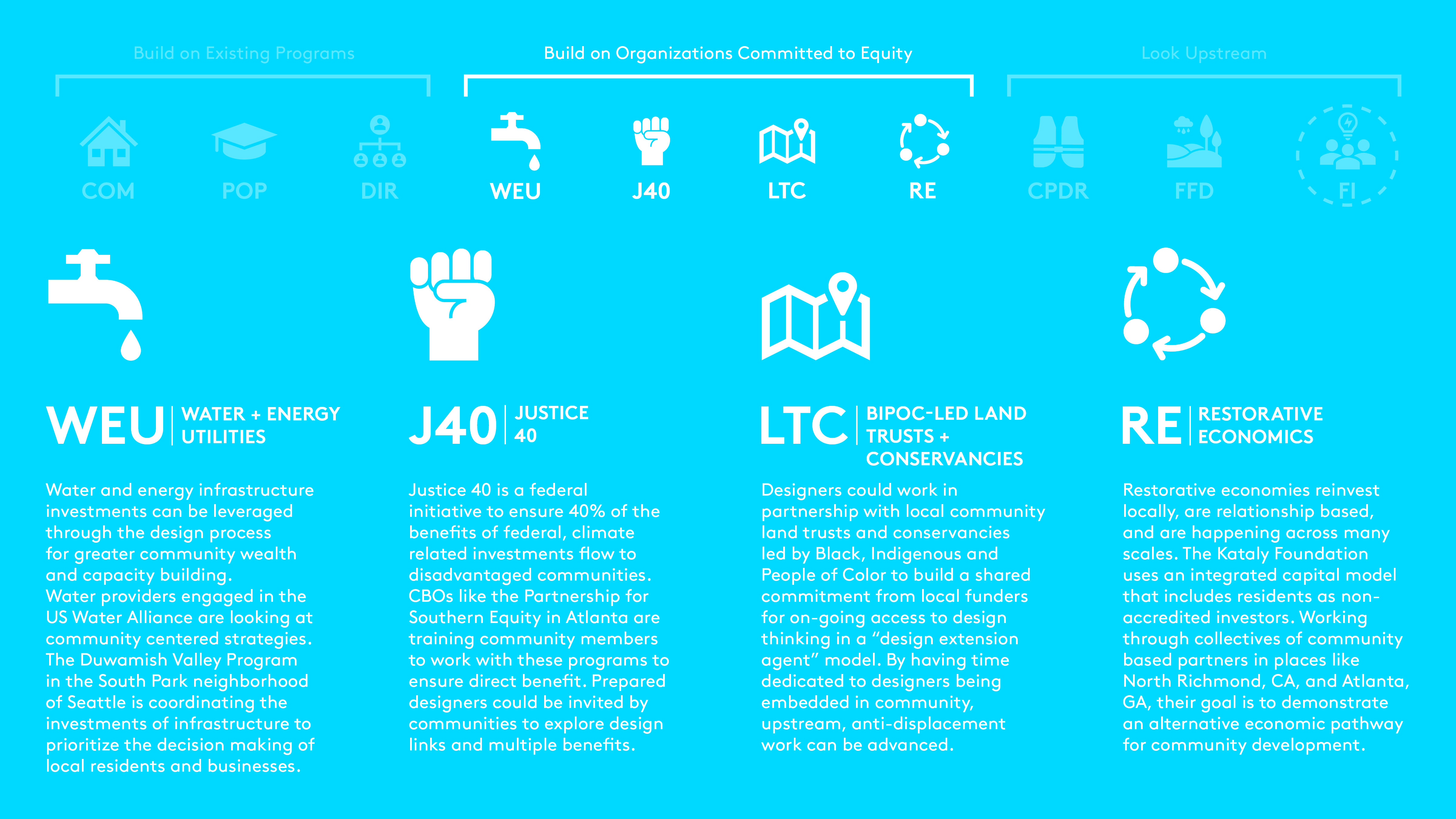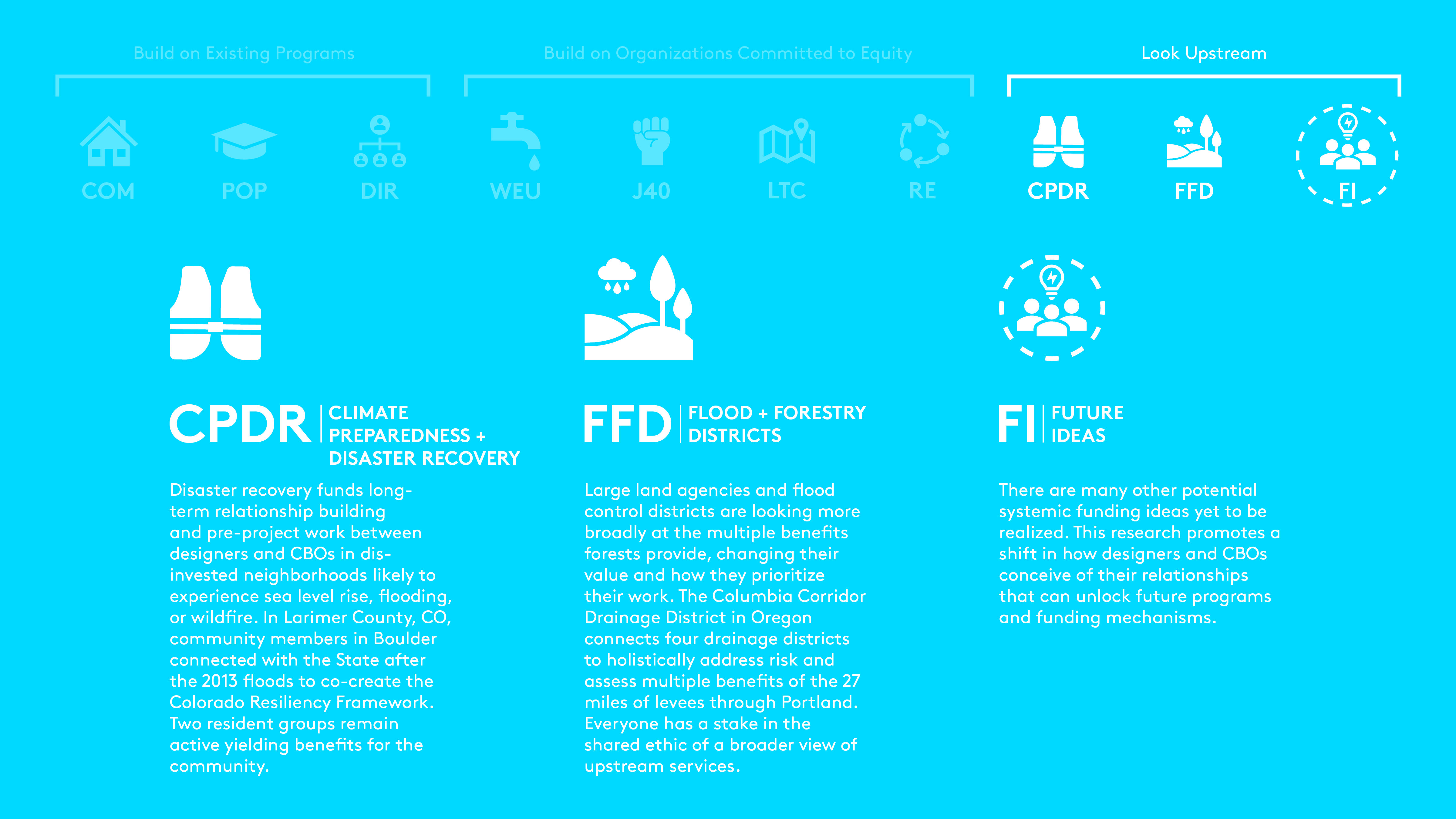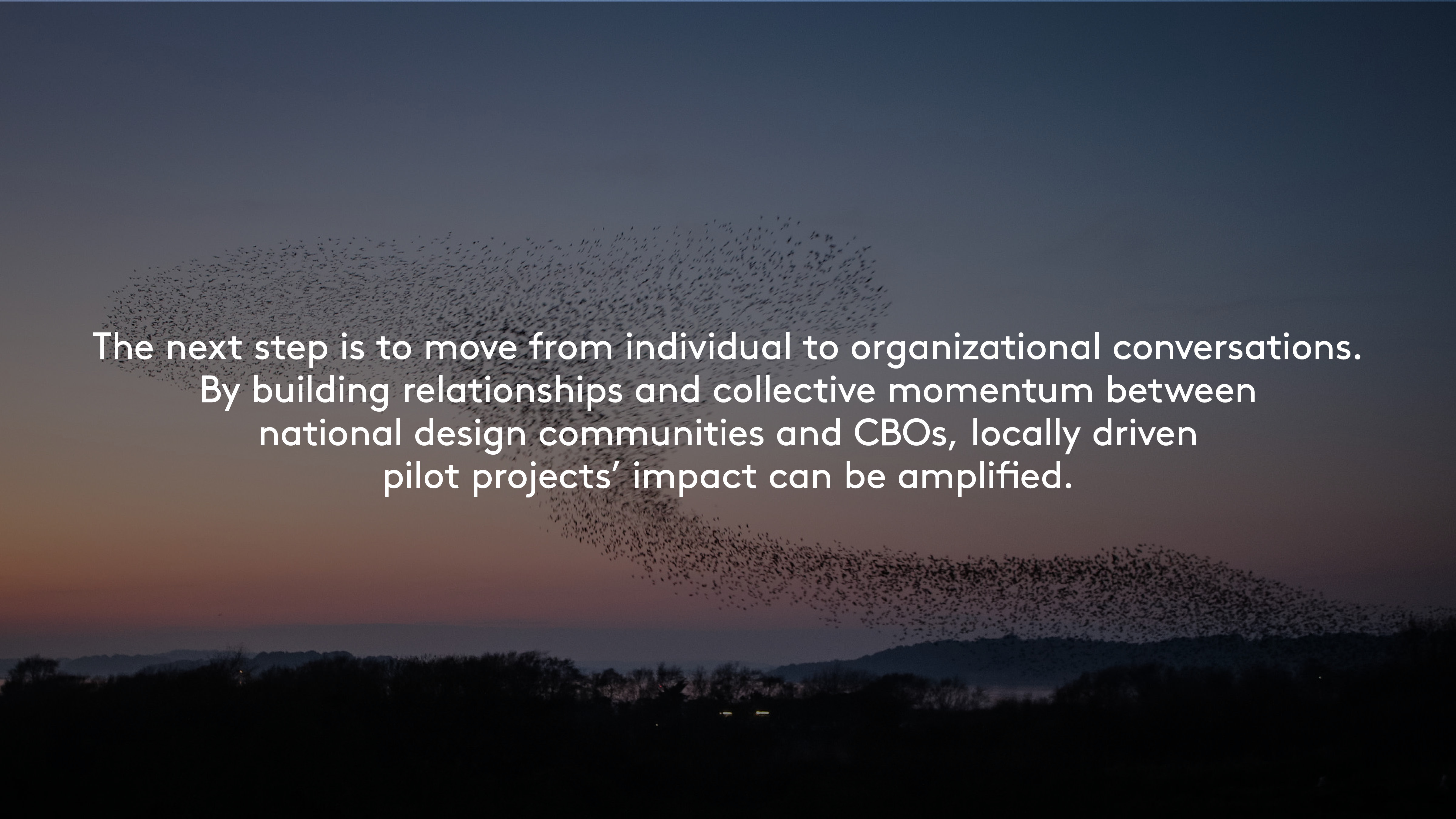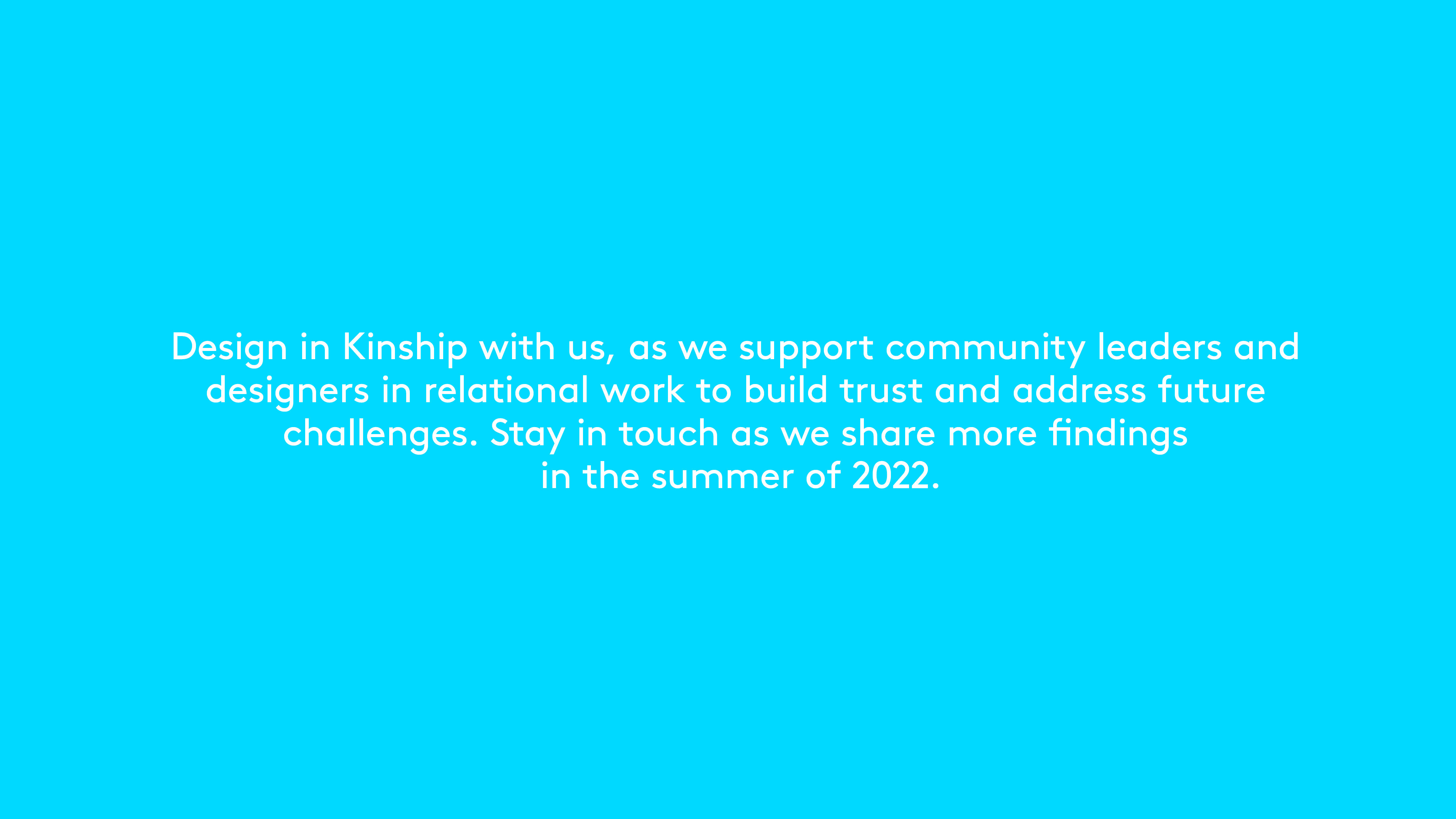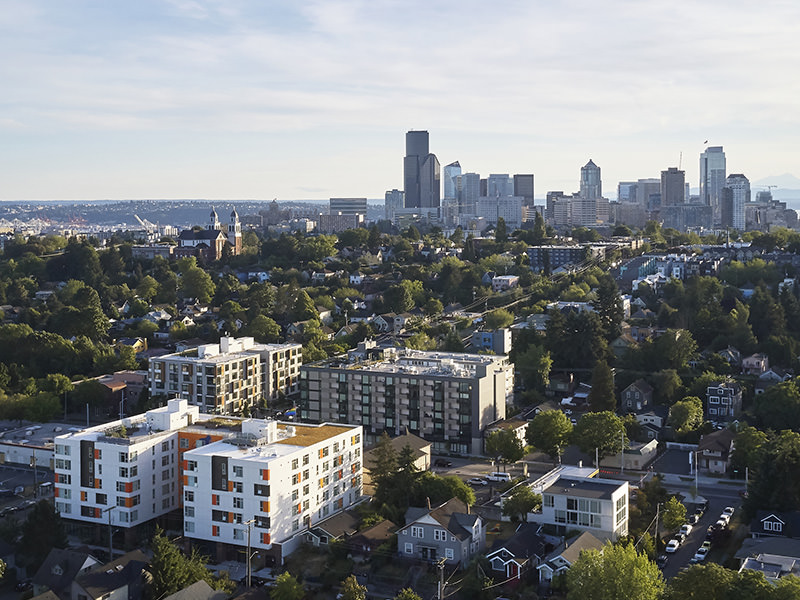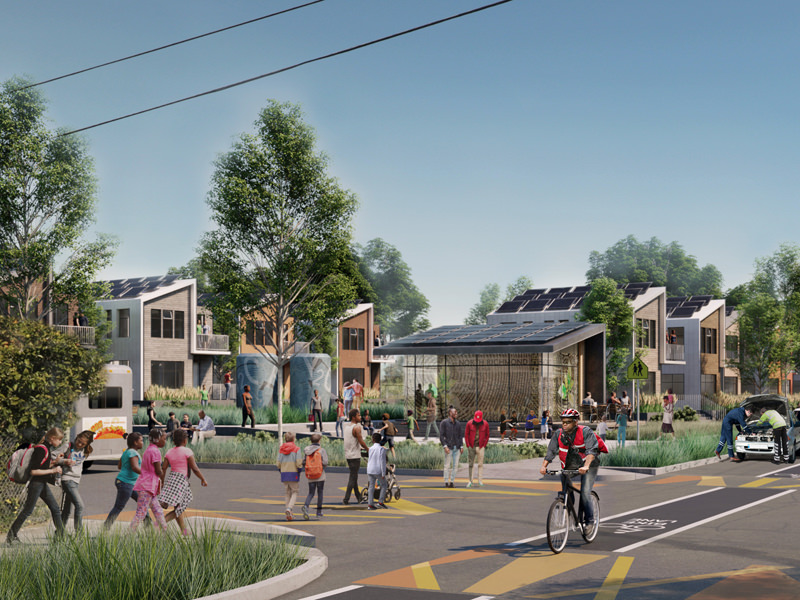Communities and Designers in Partnership
Vision
Design in Kinship explores how to mainstream relational work and build kinship between designers and community leaders. If equitable design is the stated goal, relational work is the pathway to get there. What’s missing in the traditional design process is the time to build trust between designers and communities—particularly between communities of color who have experienced the impacts of structural racism and disinvestment and designers who often work within traditional design processes that perpetuate an inequitable built environment.
The coinciding crises of structural inequity, climate change and health disparity are changing economic assumptions and present an opportunity to develop alternative approaches that prioritize the wisdom and insights of community-based organizations about how communities are best suited to respond. This research identifies nine systemic funding sources that could support CBO’s to be full partners in shaping the built environment.
The design community can transform by advocating for this shift in shared power and resources. By being in solidarity—communicating, collaborating, and advocating for community-based issues regularly alongside community-based organizations—the design community can move to more relational work that is collectively and cooperatively driven.
Research
This research occurred within the structure of the 2021-22 Landscape Architecture Foundation (LAF) Innovation and Leadership program, which is focused on transformational leadership and is a mixed cohort of mid-career, emerging, and senior career fellows. The program is based around monthly check-in sessions, multiple 2.5-day residencies and readings and discussion about leadership.
The research methods for Design in Kinship intentionally model a relational process. Rooted in conversations with BIPOC community leaders, the approach follows their lead. Progress was discussed and work was realigned with community leaders’ comments mid-year and again at a final workshop. Moving forward, on-going partnerships, collaborations and advancement of the research will be focused on these leaders.
The exploration of Design in Kinship included more than 60 semi-structured interviews; a survey of designers and community leaders with more than 300 respondents; literature review; mapping of case studies across scales; Venn diagram mapping of the motivations and characteristics of designers and community organizers and testing a causal mapping process focused on marginalized voices; and initiated a change mapping exercise of historical economies.
Research findings revealed systemic changes in the way economic value is shifting due to climate change, health and equity issues. Upstream investments in public health, community climate preparedness, and flood and forestry districts—often related to risk management—is changing the typical economic picture. Value is more frequently being attached to avoided costs, multiple benefits and equitable distribution of resources. Climate impacts will continue to require upstream thinking and these investments could be a source for funding relational work through community based organizations.
Looking Forward
Nine potential systemic funding pathways for relational and pre-project work were identified through the conversations over the past year. They fall into three groups:
-
Building on existing programs like embedding community design centers in disinvested neighborhoods, expanding the professors of practice model to private, public and non-profits, or designer in residence programs like the Rose Fellows or “design extension agents”
-
Building on organizations committed to equity such as utility districts, BIPOC land trusts and land conservancies, restorative economic funds or community training programs like those supporting the Justice 40 initiative, where 40% of federal infrastructure investments will go to communities of color
-
Looking upstream at community climate preparedness and flood control and forestry districts which are systemic opportunities to mainstream this work with proactive communities and agencies
These funding pathways could be linked to community-based organizations so they are in a position to invite prepared designers into relational work with them before projects are identified.
The next step is to move from individual to organizational conversations. By building collective momentum between national design community organizations and community-based organizations, locally driven pilot projects would have the commitment of national organizations to amplify their work and move toward mainstreaming authentically designing in kinship.


